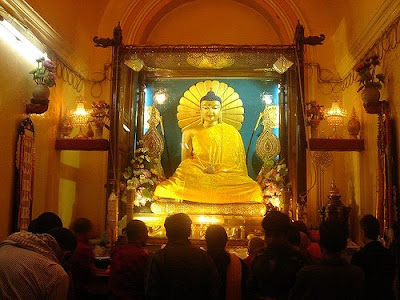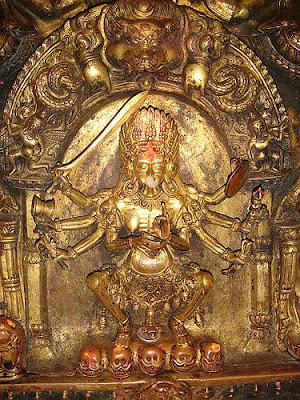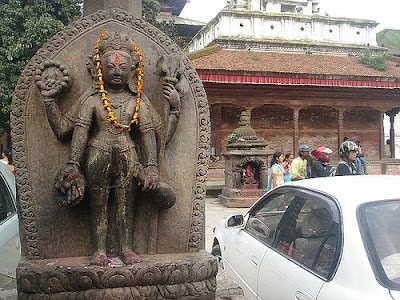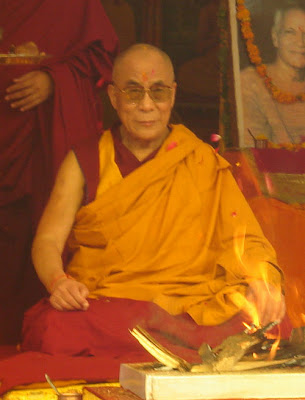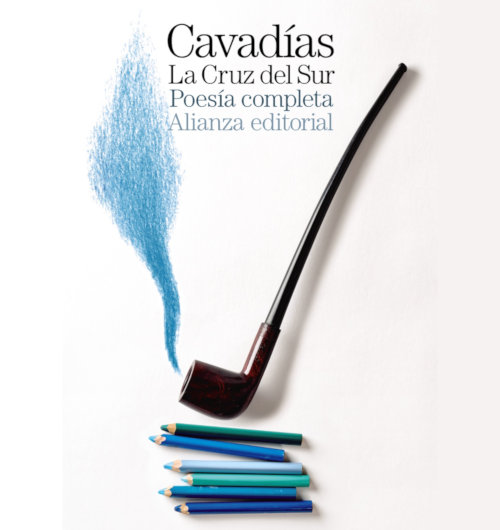Kathmandu

Everyone knows I get boring and "spiritual" on holidays. Well, this new year is no exception.
Let's start 2009 off right. It is, after all, the last of the Aughts and oughta be done right.
 Swayambhu, the famous "Buddha Eyes" temple (one of many, but probably the most famous one) is under restoration. I thought that was fitting for the New Year, even if it is the English new year. A few questions revealed that a local Nepali monastery (and some foreign well-wishers), not the government, was sponsoring the restoration.
Swayambhu, the famous "Buddha Eyes" temple (one of many, but probably the most famous one) is under restoration. I thought that was fitting for the New Year, even if it is the English new year. A few questions revealed that a local Nepali monastery (and some foreign well-wishers), not the government, was sponsoring the restoration.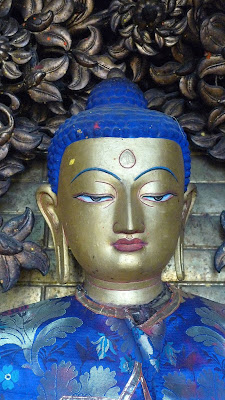
Here are some photos and details from our recent trip to Swayambhunath temple (the sistren and I, that is).
The blue Buddha is Akshobya, the "unshakeable" Buddha, to whom we will pray when the next earthquake rocks the Valley (just kidding. Well, not really kidding).
The elaborate carved archway at the top of the page shows Akshobya in the "bhumisparsa" (touching the earth) mudra with right hand, Dhyanam (meditation) with left hand.
 This figure is holding his hands in the Dharmacakra mudra - the 'teaching' mudra aka "turning the wheel of dharma." This mudra is usually associated with Vairochana Buddha.
This figure is holding his hands in the Dharmacakra mudra - the 'teaching' mudra aka "turning the wheel of dharma." This mudra is usually associated with Vairochana Buddha.

The blue Buddha is Akshobya, the "unshakeable" Buddha, to whom we will pray when the next earthquake rocks the Valley (just kidding. Well, not really kidding).
The elaborate carved archway at the top of the page shows Akshobya in the "bhumisparsa" (touching the earth) mudra with right hand, Dhyanam (meditation) with left hand.
 This figure is holding his hands in the Dharmacakra mudra - the 'teaching' mudra aka "turning the wheel of dharma." This mudra is usually associated with Vairochana Buddha.
This figure is holding his hands in the Dharmacakra mudra - the 'teaching' mudra aka "turning the wheel of dharma." This mudra is usually associated with Vairochana Buddha.
The figure above is holding left hand in Nilotpala (holding lotus stem) and right hand in what would normally be called Gyana mudra (wisdom). But in the right hand he's holding some kind of...flower bud?? Maybe the other half of the lotus.

Here the left hand again is in Nilotpala, and the right is holding a Double Dorje with a hand gesture I haven't yet learned the name of. In Bharatanatyam it would be called Mukula, but I haven't seen this one in Charya.

